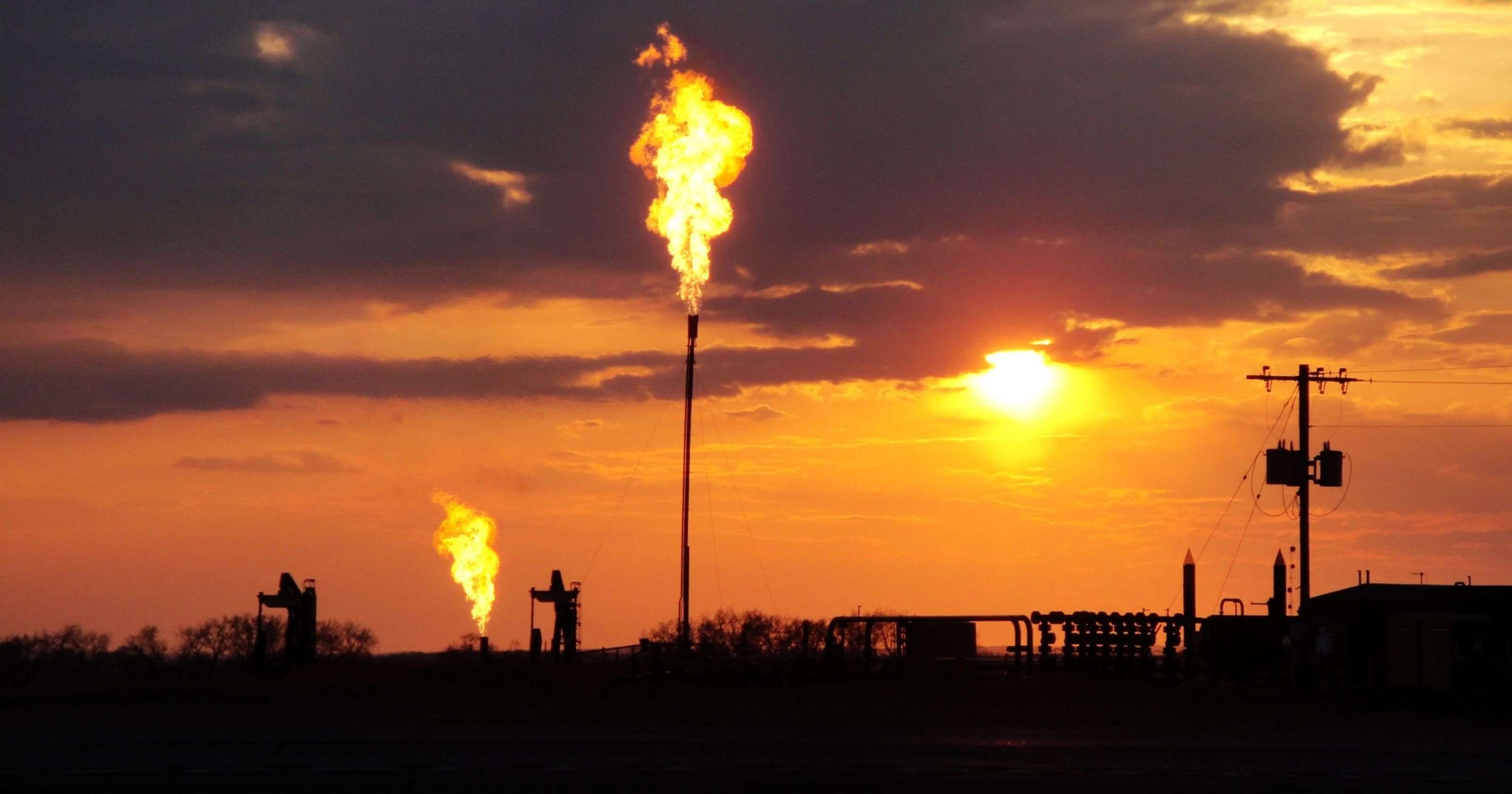CLOSE Humans are pumping at least 25 percent more methane into the atmosphere than previously thought. Video provided by Newsy Newslook
The Bakken oil and gas field in North Dakota produces methane emissions during fossil fuel extraction. The levels of this potent greenhouse gas increased substantially faster from 2014 to 2015 than in the period from 2007 to 2013. (Photo: Jeff Peischl/NOAA-CIRES)
The U.S. oil and gas industry emits 13 million metric tons of methane from its operations each year – nearly 60 percent more than currently estimated by the Environmental Protection Agency, a new study in the journal Science finds.
This means that natural gas, long promoted as a “clean” alternative to other fossil fuels, may not be so clean after all, according to an accompanying article in Science.
Methane is a potent greenhouse gas, with more than 80 times the climate warming impact of carbon dioxide over a 20-year timespan. It is also the main ingredient in natural gas.
The study was led by Environmental Defense Fund researchers, with support from 15 other institutions. "This is by far the most comprehensive body of research of its kind," said the fund's chief scientist and study co-author Steven Hamburg.
The new study estimates the current leak rate from the U.S. oil and gas system is 2.3 percent, versus the current EPA inventory estimate of 1.4 percent. Although the percentages seem small, the volume represents enough natural gas to fuel 10 million homes – lost gas worth an estimated $2 billion.
Researchers measured methane levels in the air around natural gas wells, storage tanks, refineries and underground pipes feeding gas to people’s homes in key gas-producing regions in states including Pennsylvania, Texas, Colorado, Utah, North Dakota and Arkansas.
Methane is emitted during the production and transport of coal, natural gas and oil. Methane emissions also result from livestock and other agricultural practices and by the decay of organic waste in municipal solid waste landfills.
However, a gas industry representative questioned the study. “No new measurements were made for this study," said Richard Meyer, the American Gas Association’s managing director of energy analysis. "Rather, the authors rely on previous scientific studies and a statistical method that produces higher emissions than previously estimated.
"I have questions about this method and worry that some alternative hypotheses were too readily dismissed," Meyer said.
Seth Whitehead of Energy in Depth, another industry group, called the emissions estimate "exaggerated," but said even if it is accurate, natural gas is still better for the climate than other fuels.
"Leakage rates calculated in the report are well below the threshold for natural gas to maintain its climate benefits over other traditional fuels, and increased use of natural gas is the primary reason U.S. carbon emissions are at a 25-year low," he said.
In an email to USA TODAY, the EPA said that it's looking forward to reviewing the study.
The new findings come as the administration of President Donald Trump works to roll back regulations from former President Barack Obama meant to force the oil and gas industry to cut methane leaks, according to Science.
"Scientists have uncovered a huge problem, but also an enormous opportunity," Hamburg said. "Reducing methane emissions from the oil and gas sector is the fastest, most cost-effective way we have to slow the rate of warming today, even as the larger transition to lower-carbon energy continues."
Read or Share this story: https://usat.ly/2MN5Suf

233C on June 22nd, 2018 at 09:11 UTC »
Which is also 28 times more "warming" than CO2.
jeremysprinkle on June 22nd, 2018 at 06:02 UTC »
The reporting levels across the energy industry suck.
My employer regularly tests landfill engines for a global energy supplier here in the UK, they run at around four times their reported limit and they only detune them for the brief hour per engine per year. That's a lot of NOX and CO that the EA probably know about but don't really care.
Just one small example in the ocean of corruption and total disregard that I see in environmental engineering.
jadentearz on June 22nd, 2018 at 06:00 UTC »
No one who is involved with GHG reporting would be surprised that EPA's number is under estimated. There are gobs of assumptions made in EPA's outlined calculation methods (e.g. all fugitive emissions are based on major equipment counts not any actual monitoring) which stack on top of assumptions operators make because upstream has never been forced to track data at the level midstream and downstream do due to lack of enforcement actions.
In defense of the industry, supply chain management is a constant moving (expensive) target no one has gotten right. To really do reporting correctly the EPA way you need to know: what wells go to what sites (years after all this stuff came online) to determine oil vs. gas, what equipment is at those sites (which can constantly change so someone in the field with just a GED needs to give enough of a hoot to pass on site changes to environmental), when upset events happen when there's little monitoring equipment and the operator on the beat may not get to the site every day, etc.
However, merely measuring methane levels "around" some of the equipment seems like a vast extrapolation for a very complicated energy system that covers thousands of miles. I didn't get much out of the article but it doesn't seem very accurate.
Edit: Managed to get to the actual article on mobile. Looks like it's based on aerial infrared monitoring of 8,000 production sites. It would be interesting to find out if the operators were known because upstream is a bit reminiscent of the wild west. Different operators operate at very different levels when it comes to maintenance. If you don't get a wide pool it could skew the results. Per the article the majority of the emissions stem from non-routine events (aka in a fair number of situations bad maintenance such as leaving a dump valve open).